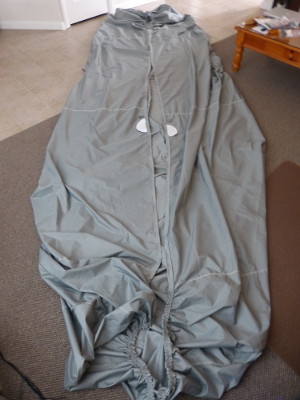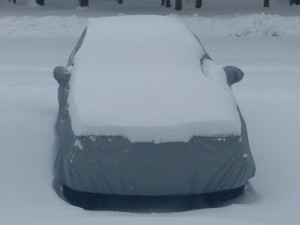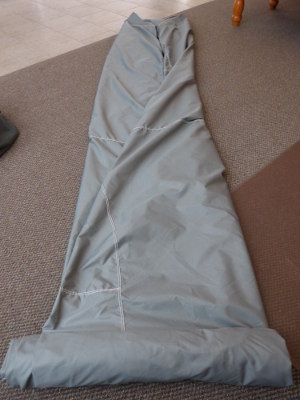Saturday, January 31, 2015
A week ago I noticed the weather forecast suddenly change from a 1-2 inch snowfall typical of an Alberta Clipper to a prediction of "historic" proportions: 18-24 inches. Since I've been a pilot for many years I've taken more than a casual interest in the science behind weather, including forecasting. And while I know forecasts can and do change I am always a bit skeptical of radical changes to the forecast. Still, I took the forecast seriously and decided to prepare. My first thoughts naturally turned to the E36 and my desire to protect its new paint work. This seemed like as good a time as any to use the new car cover I bought last year so I set about to install it.
Unfortunately the car was somewhat dirty at this point and while I knew I could install the cover in a pinch I also knew any dirt on the car would wind up getting on the inside face of the cover and perhaps contribute to scratching of the clear as the wind blew the surface of the cover around. But as luck would have it the temperature briefly climbed above freezing so I quickly washed the car, dried it and then installed the cover. I found the task a lot easier this time because there was little to no wind and I had developed a method to fold and roll the cover up so as to correctly orient it on the car. In fact, securing the cover took less than two minutes.
Over the course of the next two days the wind picked up and I observed that air flowing under the car would occasionally balloon portions of the cover up a couple inches (mostly at the interface of the hood and windshield where the material did not grip the vehicle as tightly) which interestingly kept it mostly free of snow, at least for the first few hours. When the snow picked up in intensity the weight of the snow kept the cover down and thus prevented it from "flinging" the snow off. I was then left with something similar to what you see in the picture. What followed is now a matter of history and an embarrassing example of the imprecise nature of forecasting. The storm did produce very heavy snowfall -- 300 miles to the east in Boston. We got off with a yawn-inducing 5 inches.
When the radar cleared I went out and began brushing the snow off the cover. This process took a fraction of the time because the snow tended not to stick to the cover and I naturally didn't need to worry about lifting the wipers and clearing the cowl area which typically becomes impacted with snow and ice. I found that large areas of the snow came off in sheets and yet some areas remained a bit more stubborn where a layer of ice had formed underneath. For a moment I wondered how I would manage to clear the cover of that ice but as I lifted the cover off the car I gave it a subtle shake and watched all the ice pop up and slide off the material. This allowed me to take it inside nearly entirely free of snow and ice for folding and storage. The end result? A perfectly clean car and no direct contact between the snow brush and my paint work. Mission accomplished.
If you look at the pictures you can see my technique for folding the cover for storage. My days in skydiving came in handy here, as folding parachutes involves a similar technique. In this case I put the face that touches the car down on a clean surface and then fold in the sides in until they meet in the middle. I repeat that process to decrease the width of the cover so it fits in the storage container and then roll up each end about half way before I put a small piece of blue tape on the roll associated with the front of the car so I can correctly orient it on the vehicle for installation.






